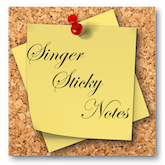Rachmaninov songs for lyrico leggiero soprano
- Вокализ (Vocalise) Op. 34, No. 14
- Здесь хорошо (Here it is beautiful) Op. 21, No. 7
- Маргаритки (Daisies), op. 38, No. 3
- Островок (The Little Island) Op. 14 No. 2
- Покинем, милая (Beloved, let us fly) Op. 26, No 5
- Сей день я помню (The Morning of Life) Op. 34, No. 10
- Сирень (Lilac) Op. 21, No. 5
- Сон (Dream) Op. 8, no. 5
- Сон (Sleep) Op. 38 No. 5
- Сумерки (Twilight) Op.21, No.3
- У моего окна (At my window) Op 26, No 10
Вокализ (Vocalise) Op. 34, No. 14
(back to the top . . .)
********
Здесь хорошо (Here it is beautiful) Op. 21, No. 7
(back to the top . . .)
*********
Маргаритки (Daisies), op. 38, No. 3
(back to the top . . .)
********
Островок, (The Little Island) Op. 14 No. 2
(back to the top . . .)
********
Покинем, милая (Beloved, let us fly) Op. 26, No 5
(back to the top . . .)
******
Сей день я помню (The Morning of Life) Op. 34, No. 10
(back to the top . . .)
********
Сирень (Lilac) Op. 21, No. 5
(back to the top . . .)
Also, a word-for-word pronunciation . . .
Сон (Dream) Op. 8, no. 5
(back to the top . . .)
********
Сон (Sleep) Op. 38 No. 5
(back to the top . . .)
********
Сумерки, (Twilight) , Op.21, No.3
(back to the top . . .)
*******
У моего окна (At my window) Op 26, No 10
(back to the top . . .)
Cho arias
Cho arias:
